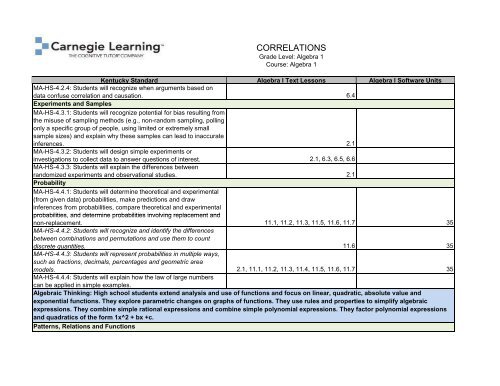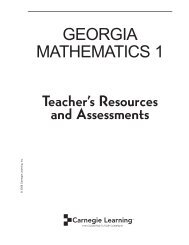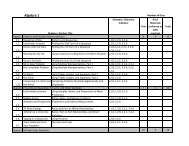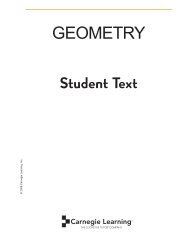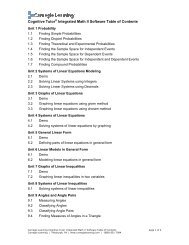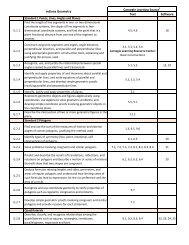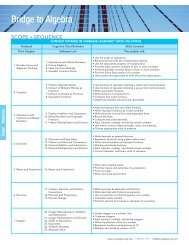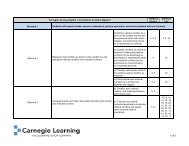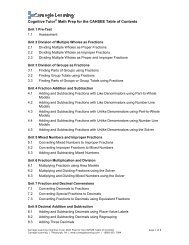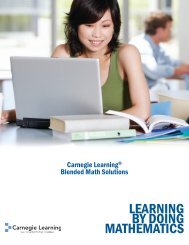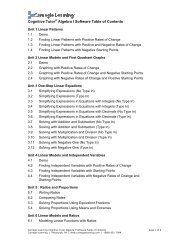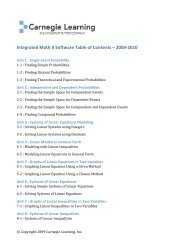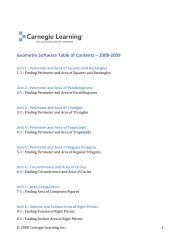KY Algebra 1.XLS - Carnegie Learning
KY Algebra 1.XLS - Carnegie Learning
KY Algebra 1.XLS - Carnegie Learning
Create successful ePaper yourself
Turn your PDF publications into a flip-book with our unique Google optimized e-Paper software.
CORRELATIONS<br />
Grade Level: <strong>Algebra</strong> 1<br />
Course: <strong>Algebra</strong> 1<br />
Kentucky Standard <strong>Algebra</strong> I Text Lessons <strong>Algebra</strong> I Software Units<br />
MA-HS-4.2.4: Students will recognize when arguments based on<br />
data confuse correlation and causation. 6.4<br />
Experiments and Samples<br />
MA-HS-4.3.1: Students will recognize potential for bias resulting from<br />
the misuse of sampling methods (e.g., non-random sampling, polling<br />
only a specific group of people, using limited or extremely small<br />
sample sizes) and explain why these samples can lead to inaccurate<br />
inferences. 2.1<br />
MA-HS-4.3.2: Students will design simple experiments or<br />
investigations to collect data to answer questions of interest. 2.1, 6.3, 6.5, 6.6<br />
MA-HS-4.3.3: Students will explain the differences between<br />
randomized experiments and observational studies. 2.1<br />
Probability<br />
MA-HS-4.4.1: Students will determine theoretical and experimental<br />
(from given data) probabilities, make predictions and draw<br />
inferences from probabilities, compare theoretical and experimental<br />
probabilities, and determine probabilities involving replacement and<br />
non-replacement. 11.1, 11.2, 11.3, 11.5, 11.6, 11.7 35<br />
MA-HS-4.4.2: Students will recognize and identify the differences<br />
between combinations and permutations and use them to count<br />
discrete quantities. 11.6 35<br />
MA-HS-4.4.3: Students will represent probabilities in multiple ways,<br />
such as fractions, decimals, percentages and geometric area<br />
models. 2.1, 11.1, 11.2, 11.3, 11.4, 11.5, 11.6, 11.7 35<br />
MA-HS-4.4.4: Students will explain how the law of large numbers<br />
can be applied in simple examples.<br />
<strong>Algebra</strong>ic Thinking: High school students extend analysis and use of functions and focus on linear, quadratic, absolute value and<br />
exponential functions. They explore parametric changes on graphs of functions. They use rules and properties to simplify algebraic<br />
expressions. They combine simple rational expressions and combine simple polynomial expressions. They factor polynomial expressions<br />
and quadratics of the form 1x^2 + bx +c.<br />
Patterns, Relations and Functions


